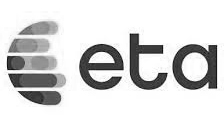Introduction
In today’s digital age, seamless and secure payment processing is a critical component of any online business. For developers, understanding integrated payments is essential to ensure a smooth and efficient payment experience for users. Integrated payments encompass a wide range of technologies and methodologies that enable businesses to accept payments across various channels and platforms. This article provides developers with an overview of integrated payments, covering the fundamentals, benefits, and key considerations.
What are Integrated Payments?
Integrated payments refer to the practice of integrating payment processing capabilities directly into a business’s software, website, or application. This integration streamlines the payment process, eliminating the need for users to leave the platform to make a payment. Instead, payments can be initiated and completed seamlessly within the business’s environment.
Understanding the Payment Flow
The payment flow in an integrated payment system typically involves the following steps:
a. Initiation: The user selects the desired product or service and proceeds to the checkout process.
b. Payment Data Capture: The system captures the necessary payment information, such as credit card details, billing address, and transaction amount.
c. Tokenization: Sensitive payment data is encrypted and replaced with a secure token, reducing the risk of data breaches.
d. Authorization: The payment gateway validates the transaction and verifies the user’s payment credentials.
e. Payment Processing: The transaction is routed to the payment processor, which debits the user’s account and credits the merchant’s account.
f. Confirmation: A payment confirmation is sent to the user and the merchant, completing the transaction.
Advantages of Integrated Payments
Integrating payment processing into your application can offer several advantages:
a. Improved User Experience: Integrated payments keep users within your application, enhancing convenience and reducing the likelihood of cart abandonment.
b. Enhanced Security: Tokenization and encryption of sensitive data ensure that payment information remains secure throughout the transaction process.
c. Streamlined Operations: Integrated payments simplify reconciliation and financial reporting, saving time and effort for both merchants and users.
d. Better Conversion Rates: A smooth and seamless payment experience leads to higher conversion rates and increased customer satisfaction.
e. Multiple Payment Options: Integrated payment solutions support various payment methods, including credit/debit cards, digital wallets, and mobile payments.
Key Components of Integrated Payment Solutions
To implement integrated payments effectively, developers must understand the essential components of a payment solution:
a. Payment Gateway: The payment gateway acts as a bridge between the merchant’s application and the payment processor. It securely transmits transaction data, manages authorization, and facilitates communication between parties.
b. Payment Processor: The payment processor is responsible for handling transaction settlement, fund transfer, and communication with financial institutions.
c. APIs and SDKs: Application Programming Interfaces (APIs) and Software Development Kits (SDKs) are crucial tools for developers to integrate payment functionalities seamlessly into their applications.
d. Compliance and Security: Compliance with industry standards (e.g., PCI DSS) and adherence to security best practices are vital to safeguard sensitive payment data.
Integration Best Practices
When integrating payment processing into applications, developers should consider the following best practices:
a. Choose a Reliable Payment Provider: Select a reputable payment provider that offers robust security features, extensive documentation, and responsive support.
b. Optimize for Mobile: Ensure that your integrated payment solution is mobile-friendly and provides a consistent user experience across devices.
c. Test Rigorously: Thoroughly test the payment integration in various scenarios to identify and address potential issues before deployment.
d. Error Handling: Implement effective error handling and user-friendly error messages to guide users through any payment-related challenges.
Conclusion
Usio, in business for more than 25 years, is the integrated payment solution for many developers. Usio APIs and SDKs are scablable including all the best and latest technology avaiable with PCI Level 1 Compliance and Tokenization.
Don’t let outdated payment methods hold you back from reaching your full potential. Join the thousands of businesses already benefiting from Usio integrated payments and elevate your customer experience to the next level!
Experience the power of seamless payments with Usio. Contact us today and witness the difference it can make for your business!”











